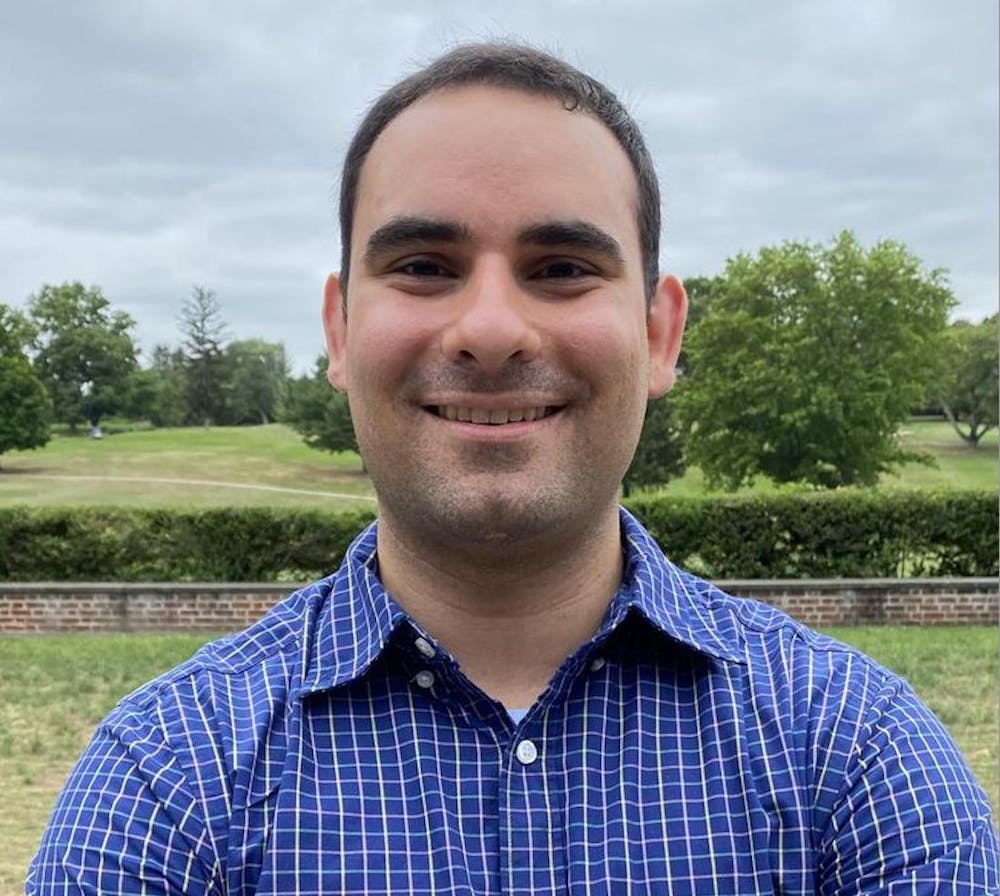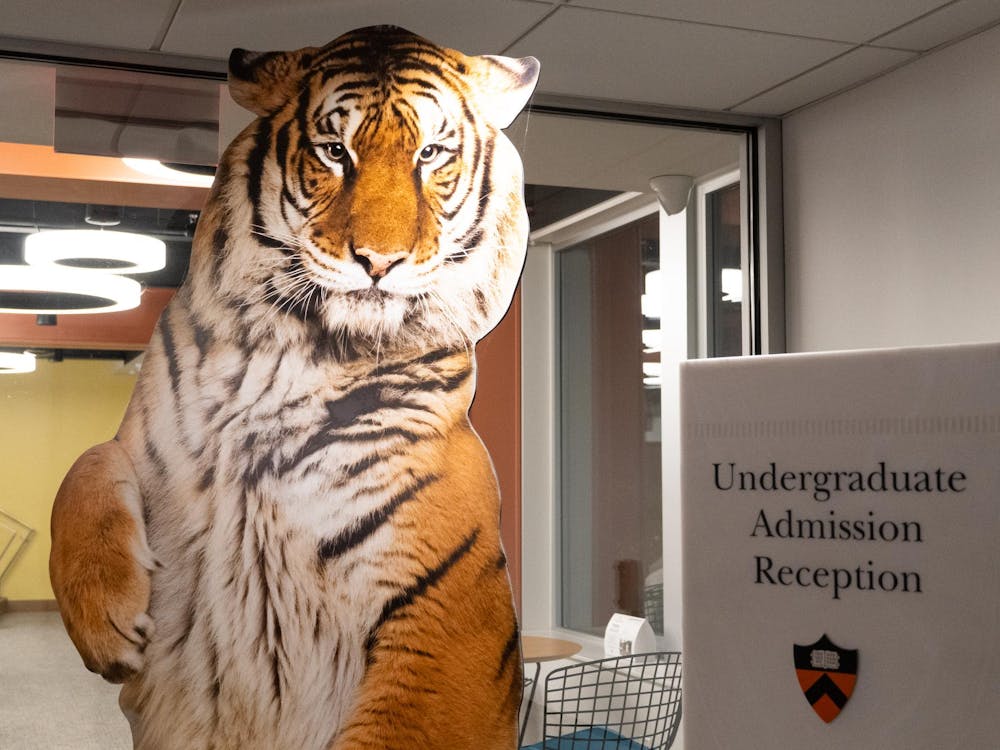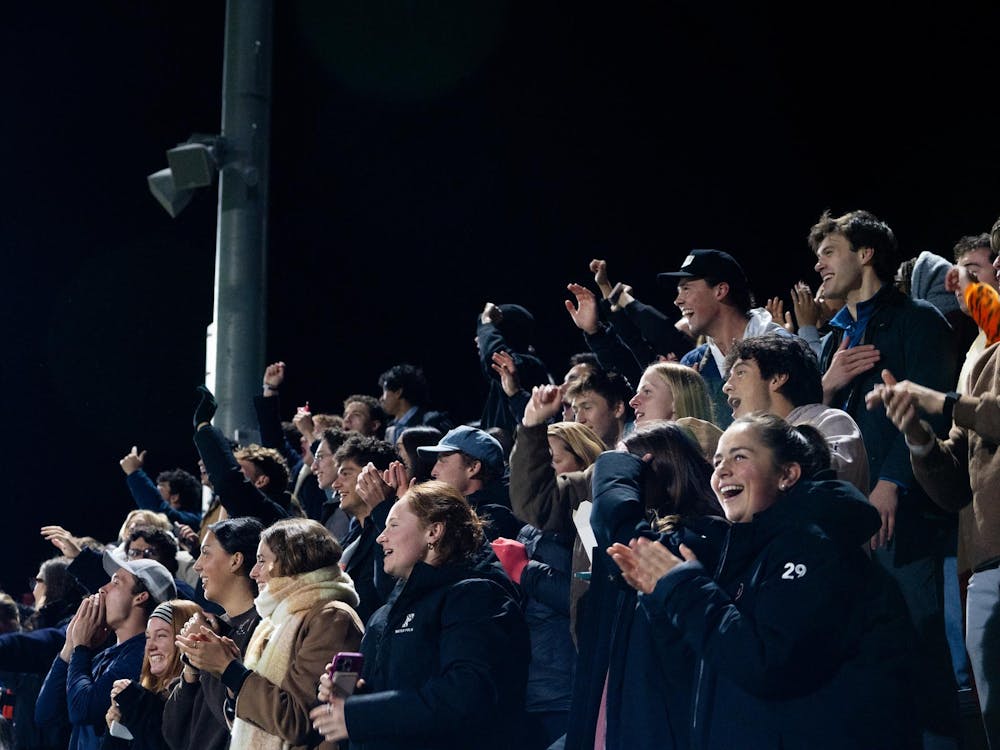Some know him for his cat, Cataclysm. Some recognize him as a Forbes Faculty Fellow, or remember him for his love for French cuisine. Many appreciate him for his distinctive teaching style in MAT 175, 201, or 202. After seven years of teaching, David Villalobos GS ’22 has cultivated strategies for helping students navigate Princeton’s notoriously tough introductory math classes.
He holds office hours multiple times a week, typically in the evenings. Held in a large lecture hall, students sit in tiers, chatting with friends and working together on the dreaded problem sets. Some choose to tackle the ordeal alone, eyes glued to their screens or notebooks. Others venture to the front to seek help.
The first source of math help comes from Undergraduate Course Assistants (UCAs), students who help answer questions at problem sessions. But if a MAT 201 student’s question is difficult enough to make it past the UCAs, Villalobos, even with a faint voice from a day’s worth of lectures, is there and eager to help. Students line up to speak with Villalobos about their impending problem sets and leave with a feeling of satisfaction. Villalobos alternates between math classes, and he will teach MAT 202 during the spring.
What compels so many students to seek Villalobos’ help? Olamide Falayi ’28 previously took MAT 202 and is now enrolled in MAT 201 out of pure interest. Falayi described Dr. Villalobos as a “pure communicator." He explained, "He’s good at making [math] not too high level, bringing it down a bit, so you can generally understand the concepts, and he makes good analogies too.”
Villalobos’s teaching methods are effective even for students without experience in a Princeton math course. For Tanya Zhou ’29, the three-dimensional aspects of MAT 201 are difficult to visualize, but she praised Villalobos’ review sessions as “really good.”
Villalobos’s influence also extends to UCAs. Zachary Yaninek ’26, a current UCA for MAT 201, has known Villalobos since his sophomore spring, when he took MAT 202. He recalled that Villalobos, who was the course head at the time, wrote the textbook, led review sessions, and consistently held office hours. In fact, Yaninek became a UCA after Villalobos reached out to him.
“I really want to emphasize the level of dedication that he brings to teaching,” said Yaninek, citing Villalobos’ three office hours a week and self-taught precepts. “He cares about teaching and teaching students well.”
“I am not going to judge them for not remembering something or judge them for not knowing something,” Villalobos said. Instead, his goal is to guide students to where they need to be. He acknowledged the fact that students often regard math as “some kind of weird punishment.” However, he reasoned that he pushes students because he believes that they have the potential to do well.
MAT 201 is a challenging class. In course reviews, students have referred to it as “so rough,” “very difficult but rewarding,” and a “collective struggle.”
“Struggling for the first time can really have a very high psychological impact,” Villabos noted.
“Practice has to be a very active experience,” he added, encouraging students to interact with the material rather than just skimming over it to build their skills.
Not everyone in Villalobos’ MAT 201 will stay in the class, as students can take weeks to figure out their math placement. During orientation, students attend a math placement workshop designed by professors such as Villalobos, exposing them to MAT 201 level questions. Following the workshop, they have many opportunities, such as the diagnostic exam and problem sets, to decide whether to remain in MAT 201 or drop to a different class. During the add drop period, if they feel indecisive, they can confer with Villalobos or another professor for more advice.

Villalobos does not expect students to feel certain at first about their class. He noted that students who see lower grades as a sign to adapt are more likely to improve throughout the semester. “Every single semester, it happens. And students come out of it with an appreciation that they have learned a lot,” he said.
Villalobos recognized that in high school, students often memorize types of problems. But he urges students to use college as a chance to understand the concept and engage with the content so they can complete the question no matter the form.
“It’s us trying to shape your minds into the best that they can be,” he said.
Melinda Huang is a contributing Features writer for the ‘Prince.’
Please send any corrections to corrections[at]dailyprincetonian.com.
Correction: A previous version of this article referred to Villalobos’s cat, Cataclysm, as “Catastrophe.” His cat’s name is, in fact, Cataclysm.








